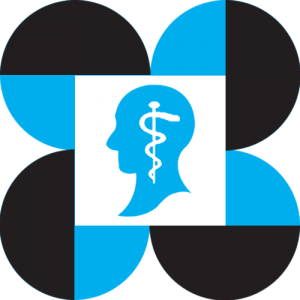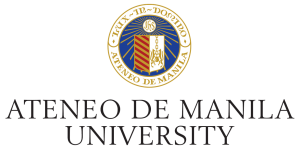-
 Maria Lourdes SantosMarch 25, 2013 at 5:55 pm #1468
Maria Lourdes SantosMarch 25, 2013 at 5:55 pm #1468The eHealth Online Conference for today tried to answered the blanket question, “Paano susugpuin ang Tuberculosis (TB)?” from this a number of subtopics were generated, these are:
• the health governance aspect of TB prevention,
-Ms. Rosemarie Johnson-Herrera, RN emphasized the government’s responsibility to ensure three things: 1.) proper information-dissemination on TB-related matters, 2.) the quality of health services, and 3.) the quality of life of its citizens. She also emphasized the need of LGUs to be more vigilant on the fight against Tuberculosis given the devolved Philippine health service.
-Mr. Robert Belchez, RN,of NTP DOH, on the other hand shared his idea of localizing information-dissemination, to use the current knowledge and context of the local setting to effectively teach them about the importance of curing Tuberculosis. He also shared that DOH is now partnering with NGOs, as well, to decentralize TB treatment to acknowledge increasing defaulters.
• PhilHealth-related TB patient benefits
-Dr. Adeline Mesina shared through an email to Dr. Batangan that PhilHealth TB DOTS package, they have around 1229 accredited TB DOTS facilities, 1169 of which are government facilities.
-Dr. Remonte attached TB Dots Outpatient Benefit package
• the discussion on TB Dots clinic,
-Ms. Faith shared her experiences in RHUs/ health centers where she heard of the following patient complaints: 1.)smear-negative patients not being included in the DOTS program, 2.) TB drugs for children not being a priority in the program, and 3.) patients who have no time to go to the DOTS
-Dr. Arthur Lagos addressed to the aforementioned raised issues as follows: 1.) new policies are being developed by DOH to address this, 2.) TB medicines for children has been a priority since 2008, and 3.) program managers have encouraged flexibility in administering TB drugs, meaning TB drugs need not be administered in RHU alone.
-Ms. Faith and Dr. Lagos agree that there are issues that need to be addressed through a more comprehensive assessment of the situation.
-Dr. Cecile Maramba Lazarte shared that majority of children with primary TB will probably be smear negative thus the importance of case definitions in pediatrics
• access to anti-TB medicines,
-Dr. Nonoy inquired about the plan to remove TB drugs from pharmacies so they can only be accessed through the DOTS clinics. Dr. Batangan replied that he remembers that this was mentioned in one of the meetings but he does not remember it being pursued. Dr. Nonoy expressed that he finds the lack of follow-up unfortunate and though it is being implemented in Valenzuala and QC, it still reflects the challenge in working with LGUs. While some will quickly adopt these initiatives, some may not be as efficient.
– Ms. Zaza Munez shared that there are countries who have successfully limited the access of TB drugs to the public sector and adds that we should learn from their experiences. She also emphasizes the need to ensure not only the availability of TB drugs, but also the need to ensure success in their quality, procurement, distribution, etc.
-Mr. Mon Basillo, on the other hand, thinks that the correct intake of TB drugs through DOTS is more important than having them available in pharmacies.
• local research initiatives on TB,
-Mr Vincent Tumlos shared the current research initiatives on TB funded by PCHRD. These are:
1. Incidence of Active Tuberculosis Among Health Workers with Latent Tuberculosis Infection (LTB) i nTertiary Hospital Settings – UP PGH
2. Development and Testing of an Integrated Tuberculosis – Paragonimiasis Surveillance and
3. Control Project – UP – NIH
4. Herbal Drugs Against Tuberculosis – UP Diliman
5. Patient’s Knowledge on Tuberculosis and the Determinants of Treatment Compliance –
6. University of Regina Carmeli, Bulacan
7. Patient’s and Health System Factors as Predictors to Delay in Tuberculosis Detection and
8. Treatment in Region III – Holy Angel University
Also, there are 1078 researches done locally that can be searched at HERDIN database.
• situational assessment of TB burden,
-Dr. Dennis Batangan shared the key findings of the Philippine Plan of Action to Control TB
-Ms. Hererra, again, emphasizes the need for political commitment in the lGU level to eliminate Tuberculosis. She suggested that the DOH can ensure compliance to NTP standards through the Local Health Board. She adds that TB-DOTS and Tutok Gamitan requires LGU support and though the implementation of National Health Programs have been devolved, fiscal management is not.
-Dr. Lagos stresses to see TB as a problem with social, bio-medical and economic dimensions. He puts emphasis on the need for a multi-sectoral approach to address the different factors that “contribute to the development of an environment where people become vulnerable to TB.”
-Dr. Gemiliano Aligui suggests building a strong ground work for TB. He also said that dependence on BHWs for DOTS implementation might be a weak spot in the system. He adds that, “[A] strong LGU participatory action may be required which may have to focus on the Local Health Boards (LHB) to act decisively. Also the quality of local data must be assessed in order for the LHBs to appreciate the weight of evidence and urgency. This is specially important if MDR and XDR are already detected.”
-Dr. Suzette Lazo shared a book entitled “Developing and Strengthening the Global Supply Chain for Second-Line Drugs for Multidrug-Resistant Tuberculosis” which is published by the National Academies Press (NAP) of America and is available for download free at this website: http://www.nap.edu/catalog.php?record_id=13524
• the Totally Drug-Resistant (TDR) and Multi-Drugs Resistant strains of Tuberculosis
-Mr. Tumlos shared an article where a Totatlly Drug-Resistant TB strain has been found in India.
-Ms. Munez introduces NTP’s Programmatic Management of Drug-Resistant TB where MDR TB can be cured through second-line drugs.
-Mr. Belchez sharedthat there are PMDT Treatment Centers and Satellite Treatment Centers established in every region. These are in: “…the Lung Center of the Philippines and Quezon Institute-Kabalikat sa Kalusugan, both in QC, Dr. Jose N. Rodriguez Memorial Hospital in Caloocan, PTSI-Tayuman and San Lazaro Hospital in Manila.”
– Mr. Michael Syson shared a PBS documentary entitled “An Incurable TB”
-Dr. Lagos puts emphasis on the fact that MDR TB, a threat to the success of the TB program, is mainly a man-made problem due to either lack of effective case holdings or the patient’s lack of adherence to the treatment.
Mr. Tumlos shared an article from nature.com regarding TDR TB which can be retrieved from: http://www.nature.com/news/totally-drug-resista…rges-in-india-1.9797
• Sectoral TB Prog such as School-Based TB Programs
-Dr. Elmer Soriano shared links to voideos of some school-based TB concernsList of attached documents:
[/b
]-TB DOTS Outpatient Benefit Package (PhilHealth-related TB patient benefits)
-DOH Department Memo 2011-2018 (TB DOTS Clinics)
– Developing and Strengthening the Global Supply Chain for Second-Line Drugs for Multidrug-Resistant Tuberculosis (Situational Assessment of TB Burden) -
|
You must be logged in to reply to this topic.



